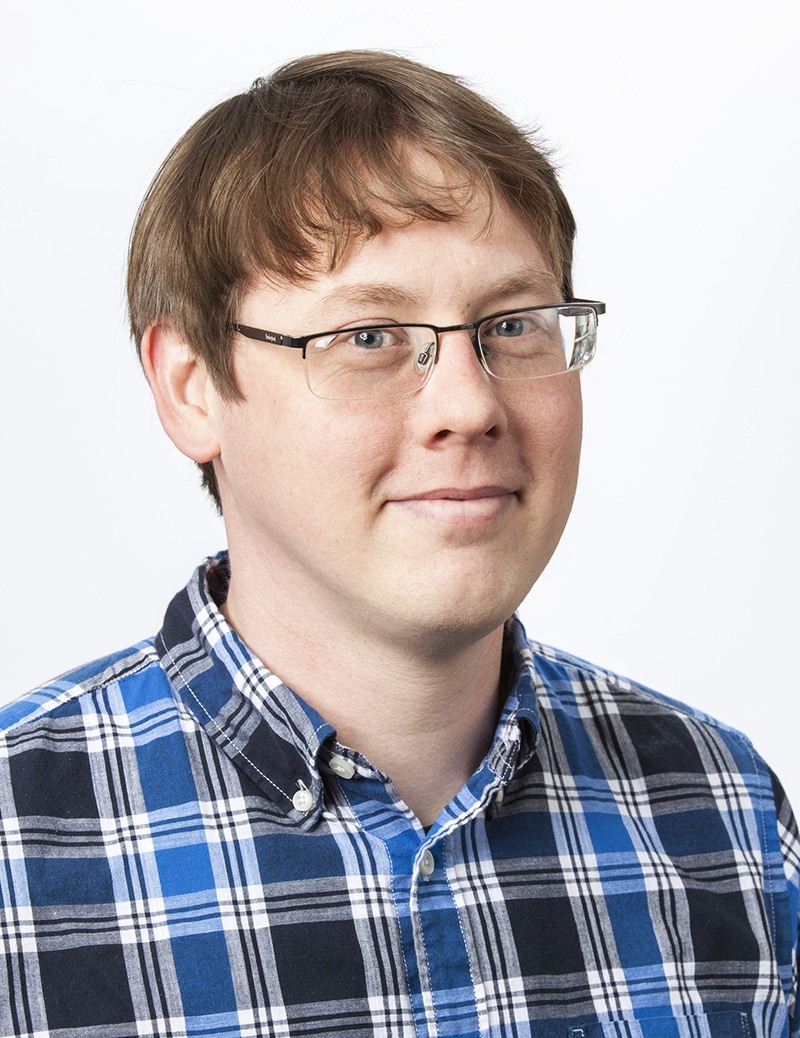Andrew Garrett
Position Title
Assistant Professor
Joint appointed: Pharmacology and Ophthalmology, Visual and Anatomical Sciences
Office Location
7322 Scott Hall
540 E Canfield
Detroit, Michigan 48201
Biography
The Garrett lab is interested in how developing neurons use cell-surface recognition molecules called cell adhesion molecules (CAMs) during neural circuit formation. Our focus is on the process of self-avoidance, which prevents sister neurites from the same cell (“self”) and from cells of the same type (“homotypic”) from becoming entangled with each other. Our model is the mouse retina, where both self- and homotypic-avoidance is important for the orderly organization of the ~100 distinct types of neurons that process visual information.
Neurons use two different strategies to promote self-avoidance. The first relies on extreme molecular diversity to provide each neuron with a unique “barcode”, allowing it to distinguish “self” from “non-self”. In mammals, this is typified by the clustered protocadherins (Pcdhs), members of the cadherin superfamily of CAMs. We focus on the gamma cluster, which is composed of 22 different isoforms, and is required for normal self-avoidance in starburst amacrine cells. We use combinations of gene editing and gene delivery techniques to ask questions about isoform diversity and specific isoform functions.
The second strategy neurons use for self-avoidance does not depend on molecular diversity. The Dscams (Down syndrome cell adhesion molecule, or DSCAM, and the similar DSCAML1) are members of the Ig superfamily of CAMs required for self-avoidance and homotypic avoidance. Dscams in mammals are not diverse, but functionally interact with other CAM systems to mask excessive adhesion allowing neurites to be indifferent to each other. When left unopposed in Dscam mutants, unmasked adhesion pulls neurites into fascicles and cell bodies into homotypic clusters. We use in vivo and in vitro techniques to investigate mechanisms of adhesive masking, and how they differ between cell types.
Education
B.S., Cedarville University, 2004 (Biology)
Ph.D., University of Iowa, 2009 (Neuroscience)
Publications
- Garrett AM, Bosch PJ, Steffen DM, Fuller LC, Marcucci CG, Koch AA, Bais P, Weiner JA, Burgess RW (2019) CRISPR/Cas9 interrogation of the mouse Pcdhg gene cluster reveals a crucial isoform-specific role for Pcdhgc4. PLoS Genetics 15(12): e1008554. https://doi.org/10.1371/journal.pgen.1008554
- Garrett AM, Khalil A, Walton DO, Burgess RW. DSCAM promotes self-avoidance in the developing mouse retina by masking the functions of cadherin superfamily members. Proceedings of the National Academy of Sciences. Oct 2018, 115 (43) E10216-E10224.
- Molumby MJ, Anderson RM, Newbold DJ, Koblesky NK, Garrett AM, Schreiner D, Radley JJ, Weiner JA. γ-Protocadherins Interact with Neuroligin-1 and Negatively Regulate Dendritic Spine Morphogenesis. Cell Reports. 2017 Mar 14;18(11):2702-2714.
- Garrett AM, Tadenev AL, Hammond YT, Fuerst PG, Burgess RW. Replacing the PDZ-interacting C-termini of DSCAM and DSCAML1 with epitope tags causes different phenotypic severity in different cell populations. Elife. 2016 Sep 16;5.
- Garrett AM, Jucius TJ, Sigaud LP, Tang FL, Xiong WC, Ackerman SL, Burgess RW. Analysis of Expression Pattern and Genetic Deletion of Netrin5 in the Developing Mouse. Frontiers in Molecular Neuroscience. 2016;9:3.
- Garrett AM, Schreiner D, Lobas MA, Weiner JA. γ-protocadherins control cortical dendrite arborization by regulating the activity of a FAK/PKC/MARCKS signaling pathway. Neuron. 2012 Apr 26;74(2):269-76.
- Garrett AM, Tadenev AL, Burgess RW. DSCAMs: restoring balance to developmental forces. Frontiers in Molecular Neuroscience. 2012;5:86.
- Garrett AM, Burgess RW. Candidate molecular mechanisms for establishing cell identity in the developing retina. Developmental Neurobiology. 2011 Dec;71(12):1258-72.
- Garrett AM, Weiner JA. Control of CNS synapse development by gamma-protocadherin-mediated astrocyte-neuron contact. Journal of Neuroscience. 2009 Sep 23;29(38):11723-31.
Search PubMed for a complete list of publications
